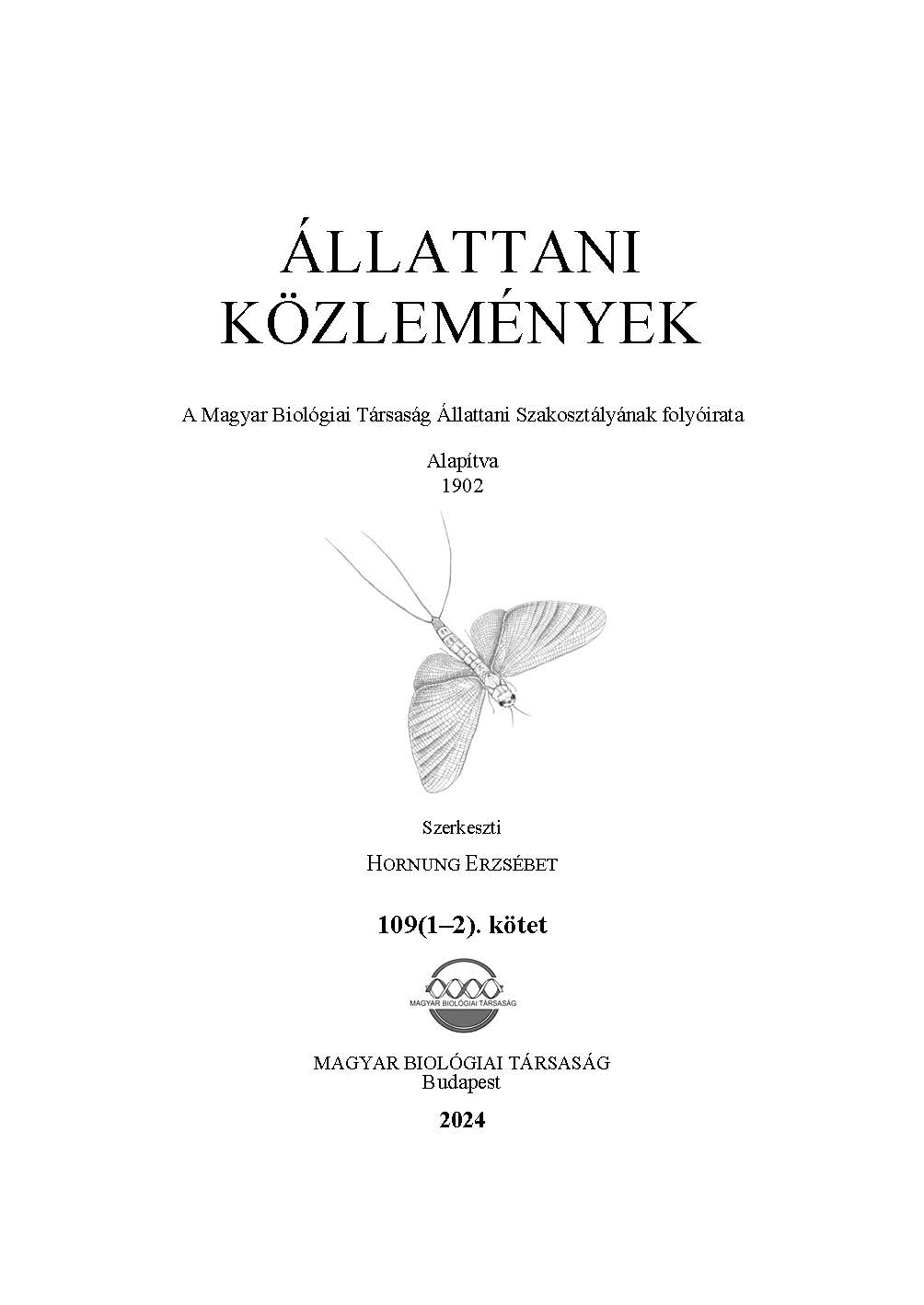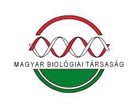Revised checklist of Hungarian wild mammals
Abstract
Up-to-date lists of wild species are not just about our curiosity to know what lives around us, but they form the basis for national and international legislation, the listing of protected species, the CITES annexes, and even the IUCN Red List. The recent revision of the legislation on protected and strictly protected species in Hungary and the Atlas of European Mammals project have also necessitated the renewal of the list of wild mammals in Hungary. Due to the regular appearance of new species, the permanent presence of species previously observed only occasionally, the separation of newly recognized cryptic species, and taxonomic revisions, the number of mammal species occurring in Hungary has risen to ninety.
References
BIHARI Z., CSORBA G. & HELTAI M. (szerk.) 2007. Magyarország emlőseinek atlasza. Kossuth Kiadó, Budapest, 360 pp.
BÓCSI B., BÍRÓ ZS. & KATONA K. 2024. A nutria (Myocastor coypus) terjeszkedése Közép-Európában: biológiai és gazdálkodási vonatkozások. In: CSERKÉSZ T., KISS CS. & CSORBA G. (szerk.), Emlősku-tatók Szakmai Napja: Konferencia és Workshop. MTM, Eger, p. 9.
CSORBA G., MOLDOVÁN O., SCHNEIDER V. & NÉMETH A. 2024. Conservation status of the blind mole rat populations in Hungary (Rodentia: Spalacinae: Nannospalax) revisited – Biologia Futura, 74: 475–487. https://doi.org/10.1007/s42977-024-00204-8
GARCÍA-MUDARRA J.L., IBÁÑEZ C. & JUSTE J. 2009. The Straits of Gibraltar: barrier or bridge to Ibero-Moroccan bat diversity? Biological Journal of the Linnean Society, 96(2): 434–450. https://doi.org/10.1111/j.1095-8312.2008.01128.x
GOMBKÖTŐ P., CSERKÉSZ T., PAPP F., NÉMETH B., LANTOS I., KLESZÓ A., MLAKÁR P., ÉZSÖL T., ILLYÉS E., BARTHA C., PONGRÁCZ Á., URBÁN L., MOLNÁR M., CZIKORA J., NOVÁK A. & SZABÓ Á. 2024. A barna medve (Ursus arctos) státuszának várható változása Magyarország faunájában. In: CSERKÉSZ T., KISS CS. & CSORBA G. (szerk.), Emlőskutatók Szakmai Napja: Konferencia és Workshop. MTM, Eger, p. 16.
GUBÁNYI A. & HORVÁTH GY. 2007. Csalitjáró pocok. In: BIHARI Z., CSORBA G. & HELTAI M. (szerk.), Magyarország emlőseinek atlasza. Kossuth Kiadó, Budapest, pp. 160–161.
JAAROLA M. & SEARLE J. 2004. A highly divergent mitochondrial DNA lineage of Microtus agrestis in southern Europe. – Heredity, 92: 228–234. https://doi.org/10.1038/sj.hdy.6800400
JOSIĆ D., ÇORAMAN E., WAURICK I., FRANZENBURG S., ANCILLOTTO L., BAJIĆ B., BUDINSKI I., DIETZ C., GÖRFÖL T., HAYDEN BOFILL S.I., PRESETNIK P., RUSSO D., SPADA M., ZRNČIĆ V., BLOM M.P.K. & MAYER F. 2024. Cryptic hybridization between the ancient lineages of Natterer’s bat (Myotis nat-tereri). Molecular Ecology, 33(13): e17411. https://doi.org/10.1111/mec.17411
JUSTE J., RUEDI M., PUECHMAILLE S.J., SALICINI I. & IBÁÑEZ C. 2019. Two new cryptic bat species within the Myotis nattereri species complex (Vespertilionidae, Chiroptera) from the Western Pa-laearctic. Acta Chiropterologica, 20(2): 285–300. https://doi.org/10.3161/15081109ACC2018.20.2.001
MÉHELY L. 1909. Species generis Spalax. A földi kutyák fajai származás- és rendszertani tekintetben. Magyar Tudományos Akadémia, Budapest, 419 pp.
NÉMETH A., CSORBA G., LACZKÓ L., MIZSEI E., BERECZKI J., PÁSZTOR J.A., PETRÓ P. & SRAMKÓ G. 2020. Multi-locus genetic identification of a newly discovered population reveals a deep genetic di-vergence in European blind mole rats (Rodentia: Spalacidae: Nannospalax). Annales Zoologici Fen-nici, 57: 89–98. https://doi.org/10.5735/086.057.0110
NÉMETH A., MIZSEI E., LACZKÓ L., CZABÁN D., HEGYELI ZS., LENGYEL SZ., CSORBA G. & SRAMKÓ G. 2024. Evolutionary history, and systematics of European blind mole rats (Rodentia: Spalacidae: Nannospalax): Multilocus phylogeny and species delimitation in a puzzling group. Molecular Phylogenetics and Evolution, 190: 107958 https://doi.org/10.1016/j.ympev.2023.107958
PAUPÉRIO J., HERMAN J.S., MELO‐FERREIRA J., JAAROLA M., ALVES P.C. & SEARLE J.B. 2012. Cryptic speciation in the field vole: a multilocus approach confirms three highly divergent lineages in Eura-sia. Molecular Ecology, 21(24): 6015–6032. https://doi.org/10.1111/mec.12024
PUECHMAILLE S.J., ALLEGRINI B., BOSTON E.S.M., DUBOURG-SAVAGE M.-J., EVIN A., KNOCHEL A., LE BRIS Y., LECOQ V., LEMAIRE M., RIST D. & TEELING E.C. 2012. Genetic analyses reveal further cryptic lineages within the Myotis nattereri species complex. Mammalian Biology, 77: 224–228. https://doi.org/10.1016/j.mambio.2011.11.004
PURGER T.J., HORVÁTH Z., CSÓR S. & PURGER J.J. 2024. Spread of the coypu Myocastor coypus (Mo-lina, 1782) along the Drava River in Hungary. Natura Croatica, 33(1): 175–181. https://doi.org/10.20302/NC.2024.33.14
SALICINI I., IBÁÑEZ C. & JUSTE J. 2013. Deep differentiation between and within Mediterranean glacial refugia in a flying mammal, the Myotis nattereri bat complex. Journal of Biogeography, 40(6): 1182–1193. https://doi.org/10.1111/jbi.12062
SAVIĆ I. & SOLDATOVIĆ B. 1984. Karyotype evolution and taxonomy of the genus Nannospalax Pal-mer, 1903, Mammalia, in Europe. Serbian Academy of Sciences and Arts, Separate Editions, Vol. 560, Department of Natural and Mathematical Sciences 29: 104 pp.
SCHERTLER A., RABITSCH W., MOSER D., WESSELY J. & ESSL F. 2020. The potential current distribution of the coypu (Myocastor coypus) in Europe and climate change induced shifts in the near future. NeoBiota, 58: 129–160. https://doi.org/10.3897/neobiota.58.33118
VÁCZI O. 2022. Nutria. Myocastor coypus (Molina, 1782). In: HARASZTHY L. (szerk.): Invasive animal species in Hungary. Duna–Ipoly National Park Directorate – Ministry of Foreign Affairs and Trade, Budapest, pp. 338–341.







